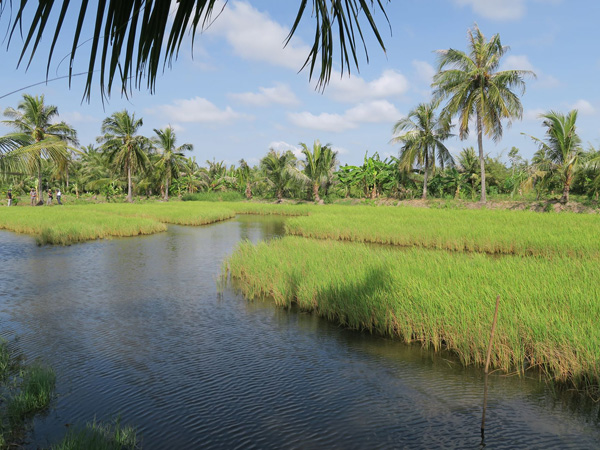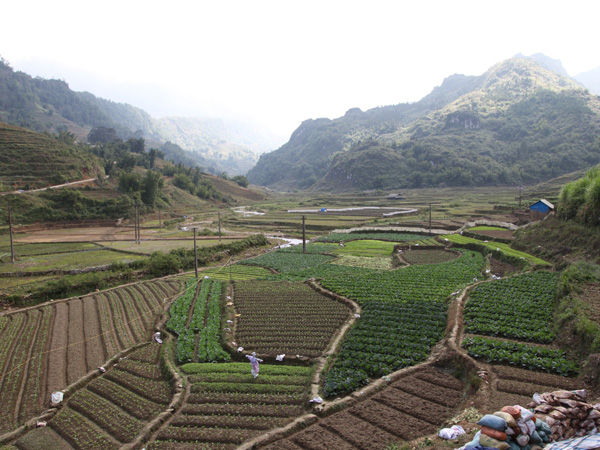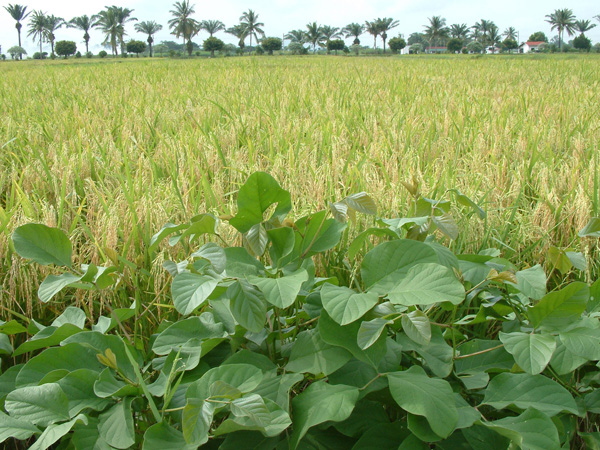Australian research guides climate change adaptation in the Mekong Delta
By The Australian Centre for International Agricultural Research
As changes in weather patterns are being felt across the Lower Mekong Basin in Vietnam, the impacts of climate change are now being seen. Studies show that the basin is vulnerable to several climate change impacts that include a predicted mean temperature rise of approximately 0.8 degrees Celsius by 2030, as well as a regional increase in annual precipitation of 200 millimetres.
However, adaptation initiatives are underway, focussing on water management, agriculture, and natural disaster management. Working together with farmers in Australia and the Mekong Delta, Australia’s leading agricultural research for development agency, The Australian Centre for International Agricultural Research (ACIAR) has identified crop management technologies that would help these farmers cope with climate variability.

The green rice crop would normally indicate good growth and success. The severe soil salinity associated with a drought has
affected the capacity of the rice to flower and produce seed.
One research project has proven that the water-saving irrigation technique of alternate wetting and drying is a win-win innovation. This involves the farmer only irrigating just before the soil has dried so much that the plants will be excessively stressed, and as we know helps farmers to cope with water scarcity. Alternating wetting and drying also reduces methane emissions from paddy fields by up to 50 per cent, as well as saving water.
Currently many farmers in the Mekong Delta grow three crops of rice per year. ACIAR’s research showed farmers that by replacing one rice crop with an upland crop, such as a pulse, increases farmers’ income due to the high value of the upland crop, and reduces the irrigation water demand.
The research also discovered that farmers in the Mekong River Delta have been applying too much phosphorus fertiliser to their fields, resulting in substantial phosphorus accumulation in the soil. As we know in Australia—decreasing fertiliser applications increases farmers’ net income and limits the environmental footprint of agricultural production.

The upland farming systems are rapidly evolving in the Mekong from traditional to modern systems. Products from crop diversification of upland areas can be used for food and nutrition security as well as reduce water requirements.
In the saline zone of Bac Lieu Province, traditional rice farming is based on a long-duration local variety (called Mot Bui Do) grown during the wet season and maturing in the dry season. After the wet season finishes, flow in the Mekong reduces and saline water moves upstream, and this can happen early enough to impact on the rice.
Through ACIAR’s research, framers were introduced to short-duration high-yielding varieties reducing the salinity risk to the rice. Some farmers were also supported to utilise the saline water to grow saltwater shrimp in the field after the rice season, during the dry season—supplementing their income.
As the Mekong Delta is one of the most important food producing areas in the world, and one of the most vulnerable to climate change, to round things out, the Vietnamese Government felt it was important for them to be proactive in the understanding and mitigation of greenhouse gases.
Mega-deltas are vital food producing areas. It is through changes to productivity on these deltas that climate change may have the biggest impact on global food security. Of course many people and organisations are chipping in to address these problems globally—research is a village and ACIAR has been working on this for 35 years.
For more information, visit aciar.gov.au.

Legumes intercropped with rice in Myanmar.



